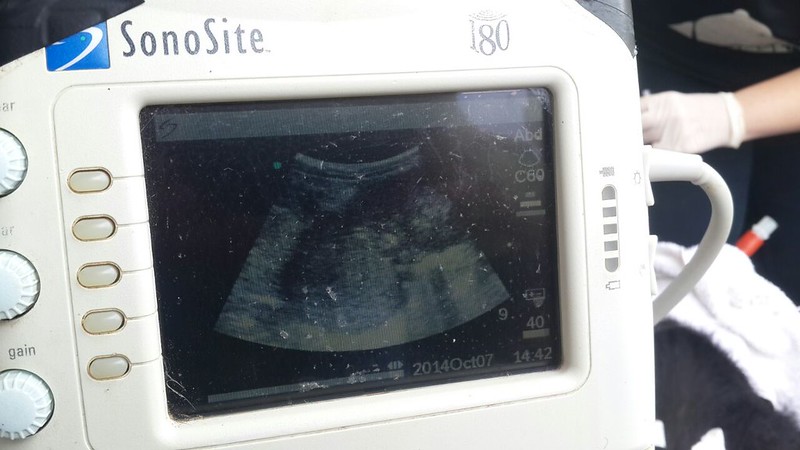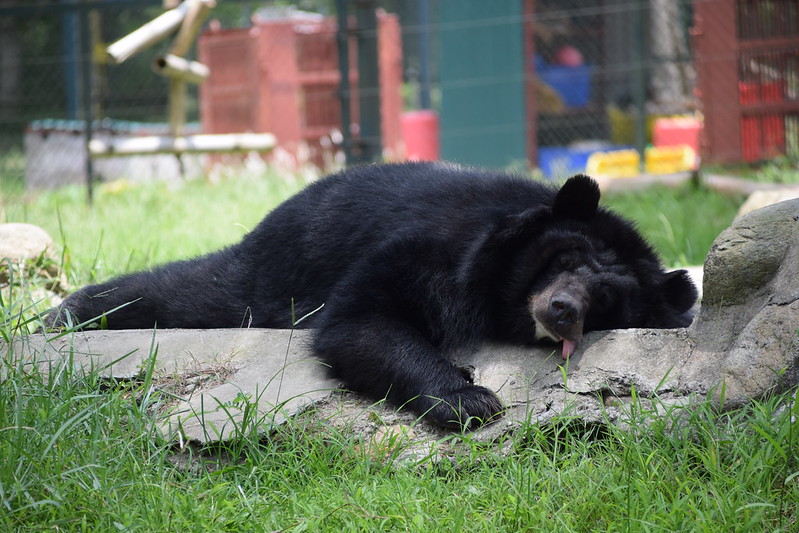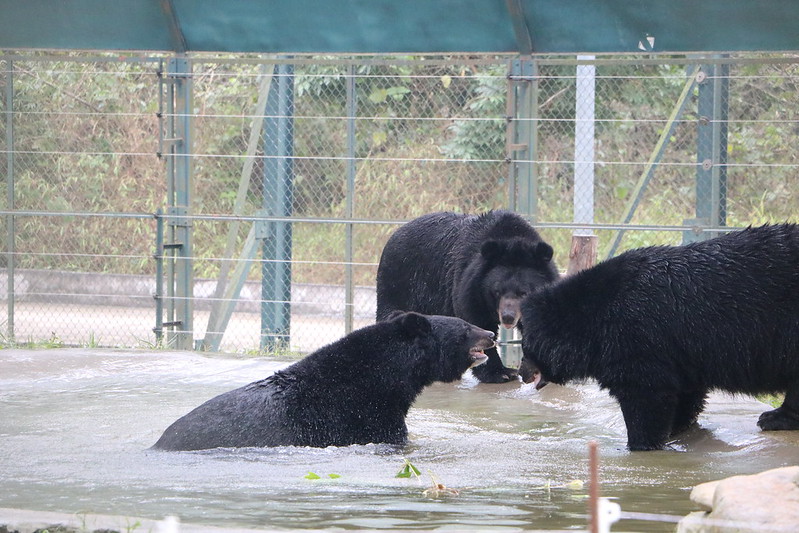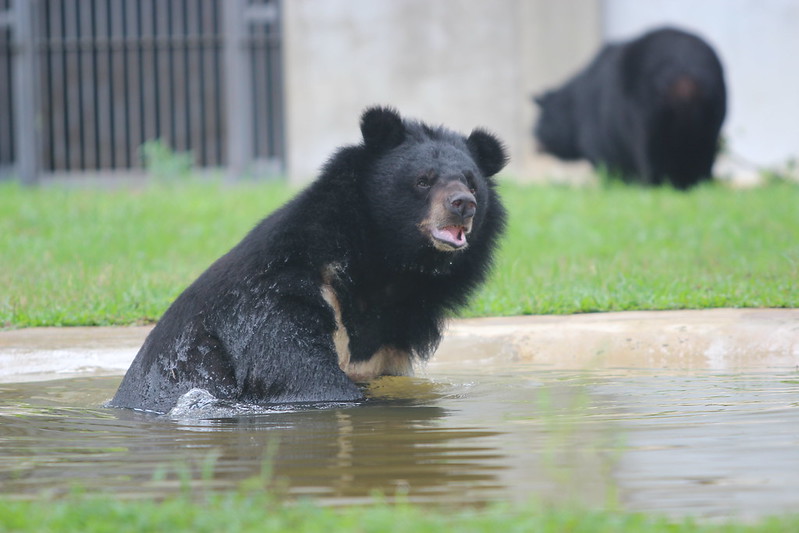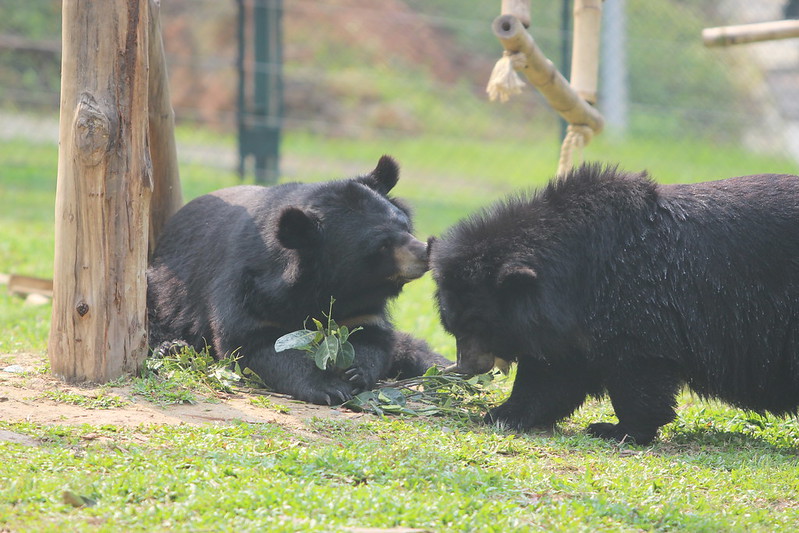Emptying the cages: A history of bear rescues in Vietnam
22 December 2017

Since 2007, Animals Asia has rescued 186 bears in Vietnam by working hand in hand with the authorities and even ex-farmers – here’s how it happened:
This month, six bears were rescued from bile farming hotspot Binh Duong, bringing the total number of bears rescued in Vietnam in 2017 to 18.
So far, 186 bears have been rescued since our work first began on site in 2007.
Here is how the world was changed for nearly 200 incredible animals suffering unspeakable cruelty.
2017
Number of bears rescued: 18
We ended the year on a very happy note, rescuing six bears this month from a bear bile farm in Binh Duong province. They were voluntarily handed over by the owner of the farm, Nguyen Tien Ngoc, who had a change of heart about farming bears after Animals Asia alerted him to the cruelty of the business.
Lovable duo Wendles and Bazan, who were rescued in April 2017, melted our hearts. After spending a decade caged side-by-side, these boisterous girls finally got a chance to play with each other. They even invented their own game in which they would take turns to run at each other, roll over and enjoy a good tussle before switching places and trying again.
We were particularly saddened by the tragic fate of Rocky, who was rescued from Lai Chau province, where she was believed to have been kept as an exotic pet for at least 12 years. Health checks revealed inoperable tumours in her liver and she died shortly after - in a bitter reminder of the terrible suffering our rescued bears have been forced to endure.
2016
Number of bears rescued: 14
The first rescue mission of the year took place in April when 13-year-old Chau was rescued from a construction yard in Danang after being kept in a cage for 11 years. The last rescue of 2016 took place in December when six bears were brought home for the holidays after being rescued from Vietnam’s mountainous Central Highlands region.
The sheer geographical spread of the rescues - in the north, south and centre of Vietnam - shows the pervasive nature of bear bile farming in the country.
Our hearts went out to frightened sun bear Annemarie, who had been caged all her life after being captured and sold as an exotic pet when just a cub, and also to Bao Lam, one of 11 bears bought to dance in a circus. When the circus plans were abandoned, so too were the bears who died one-by-one until Bao Lam was the only survivor left.
2015
Number of bears rescued: 41
An incredibly busy year for the rescue teams with 41 bears saved, including 33 bears from Quang Ninh province. They were saved after an investigation into conditions on one farm in tourist hotspot Halong Bay – which is in the same province – led to a tsunami of support from all over the world.
The petition to save the Halong bears was signed by almost 120,000 animal lovers, who were joined by 12 Hanoi-based diplomats and celebrities Ricky Gervais, Judi Dench, Stephen Fry, Olivia Newton John, Ali MacGraw and others.
The outcry prompted the prime minister to declare that not only should the bears in Halong Bay be rescued – but every single bear in the wider Quang Ninh province should be released too. And on 30 October 2015, Hercules became the last Quang Ninh bear to arrive at the sanctuary, heralding the end of bear bile farming in the province forever.
2014
Number of bears rescued: 5
In March 2014, Animals Asia rescued the last known moon bear being farmed for his bile in Binh Thuan province in the south of Vietnam. Ti Map’s rescue – from (astonishingly) the top floor of a four-storey building – was not without its drama.
Our stomachs lurched when the bear, whose name means “chubby mouse” in Vietnamese, twice stopped breathing after being anaesthetised to enable the team to move him safely onto an awaiting truck. Luckily, the quick actions of Animals Asia’s senior vet at the time – twice – saved him.
2013
Number of bears rescued: 3
Four gorgeous bears were rescued in 2014 including two cubs now known as Nora Jamjack and Sunshine (originally known as Misty and Rain) who were confiscated from traffickers in a village near the Chinese border where they were likely to have been sold to a bile farm.
The cubs were handed over to Forest Protection Department officials who asked Animals Asia to give the bears sanctuary in just one of the many times we have worked with government partners to rescue bears from cruelty.
2012
Number of bears rescued: 8
A great many of our bears are rescued from bile farms but we find many others in the most surprising of places.
Rae was rescued in April 2012 from a plastics company, which bought her as a cub and kept her in a cage in front of its offices on a busy thoroughfare in Hanoi for 13 years. Many bears we rescue are extremely thin from being starved but Rae was very overweight – probably the result of being fed junk food by passersby.
As Rae’s rescue was underway many workers gathered to see her off and some of them seemed genuinely sad to see her go.
2011
Number of bears rescued: 30
In the biggest rescue of the year, 14 bears were evacuated from a farm in Binh Duong province. Among the bears handed over voluntarily by the owner was Dream Mischa Tebs, the 100th bear to be welcomed to our sanctuary in Tam Dao National Park. And what a brave bear she proved to be.
Her left forepaw was completely missing – most likely from being caught in a hunter's snare – while her right foreleg had a severe injury to the wrist fusing the joint in a permanently flexed position. To walk she had to put weight on top of her bent paw. Despite these severe disabilities she has come to enjoy a quiet, peaceful life in her forever home.
The year also saw a visit to the sanctuary by a group of Buddhist monks who blessed our newly rescued bears in a beautiful, heartfelt ceremony.

2010
Number of rescued bears: 43
A record number of bears were rescued in 2010 including 18 bears rescued from a Taiwanese businessman who had kept them for years in concrete cells at the Binh Duong city headquarters of his company before they were housed in separate compartments in cargo containers.
One of the last bears to be rescued this year was Blue. His case file says he is a “very significant bear” whose bile was being extracted at the time the local authorities raided the farm he was living on back in October 2009. This proved Blue’s owner was blatantly breaking the law and extracting bear bile for Korean tourists to use in traditional medicine.
2009
Number of rescued bears: 8
Many of our bears suffer great trauma even before they become the property of bear bile farmers – and so it was for Zebedee who was captured by poachers as a cub and struck across the face while attempting to escape.
When the rescue team found him in November 2009, he was living with a disfigured face and had spent 15 years in a tiny cage in his owner’s kitchen suffering regular bile extractions. The violent blow to his face caused a hole – known as a fistula – which left Zebedee susceptible to infection. Mercifully he underwent specialist surgery in 2017 which has changed his life forever.
2008
Number of rescued bears: 15
Several bears rescued this year had been confiscated from their owners by Forest Protection Department officials. Three bears were intercepted en route to China and another bear was found under a bus arriving in Vietnam from Laos, showing that the grotesque bear bile trade is very much alive across Asia.
Merlin, who is thought to have come from neighbouring Laos, is one of the bigger bears at the sanctuary and easy to recognise because he is usually found floating on his back in the pool or wrestling with buddies Bubu and Leika. There’s also some suspicion that Merlin is smarter than the average bear because Bubu and Leika are two of the smallest bears around – giving mighty Merlin a strong advantage!
2007
Number of rescued bears: 7
When Animals Asia first began working in Tam Dao National Park, our first duty was to care for moon bear Ben who had been confiscated from the bear bile trade and kept by the park. Tragically a festering infection from a broken hind leg meant Ben had to be euthanised, but his sad passing strengthened our resolve to build a bear sanctuary in which bears would thrive, not suffer. Happily a few months later, we received six cubs, all rescued from poachers, including Mara and Mausi, who would go on to receive a lifetime of care.
BACK
